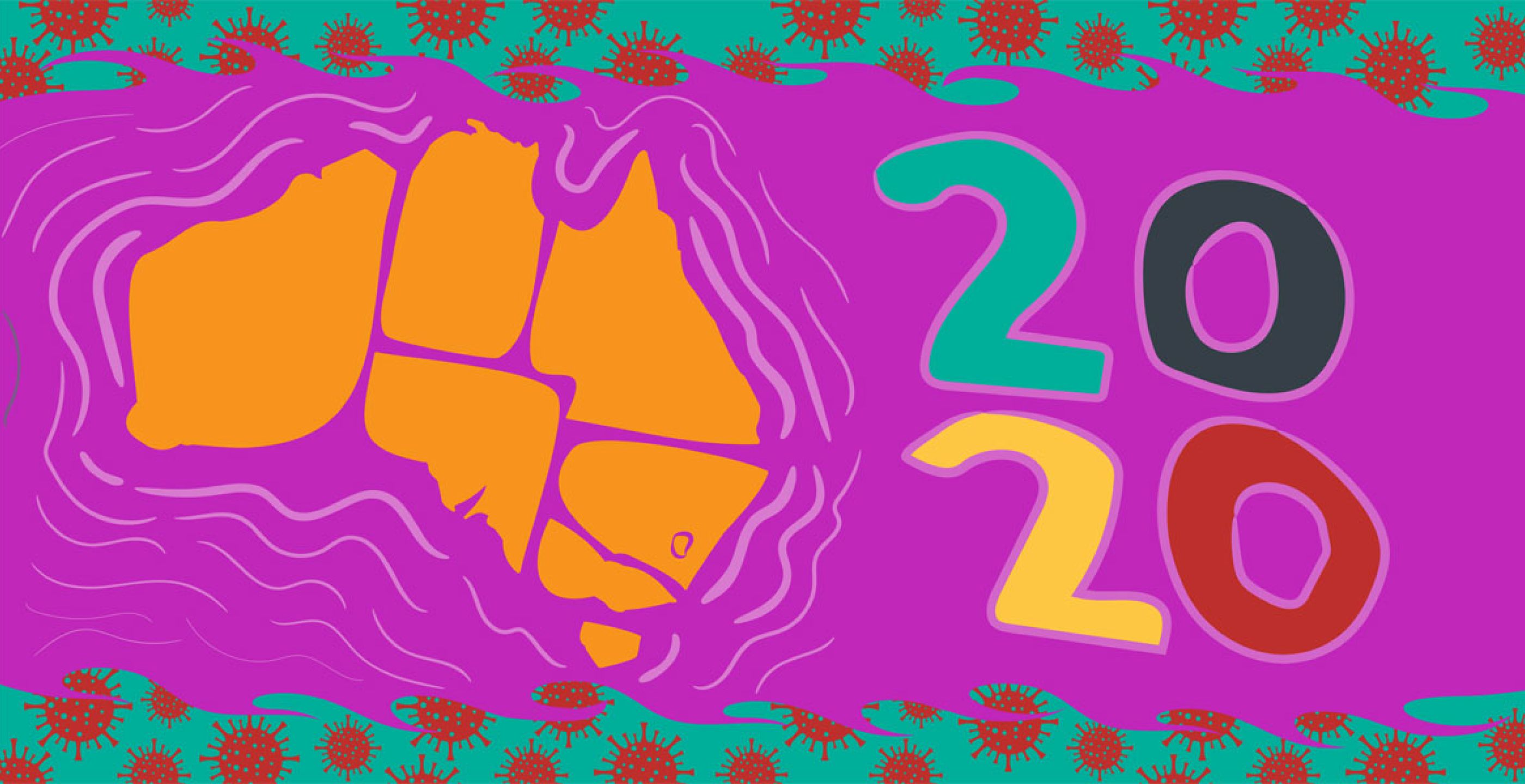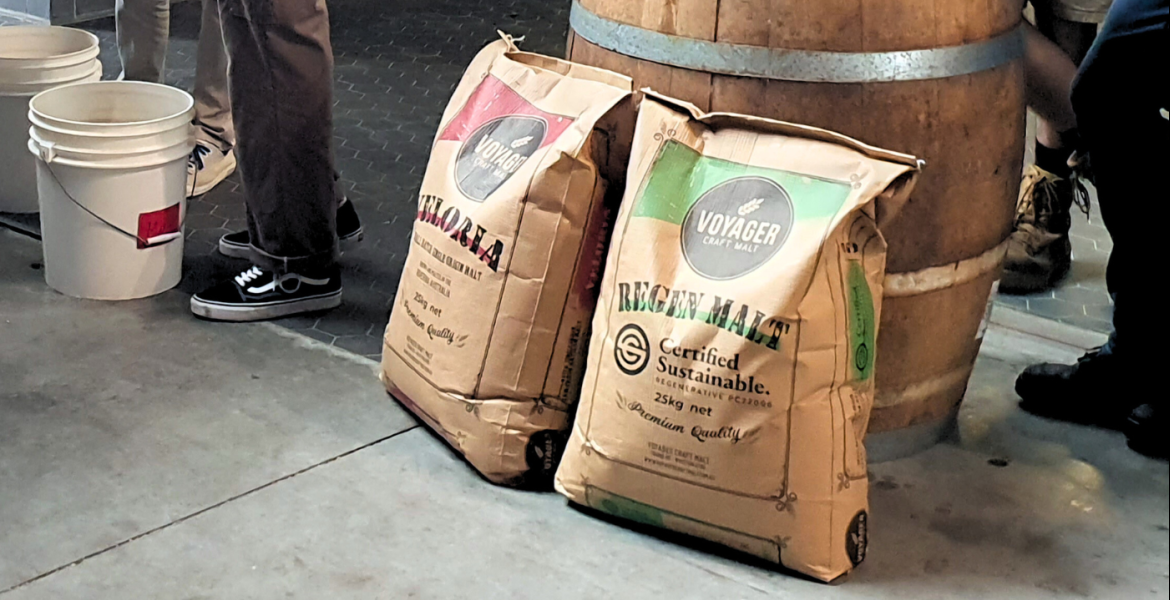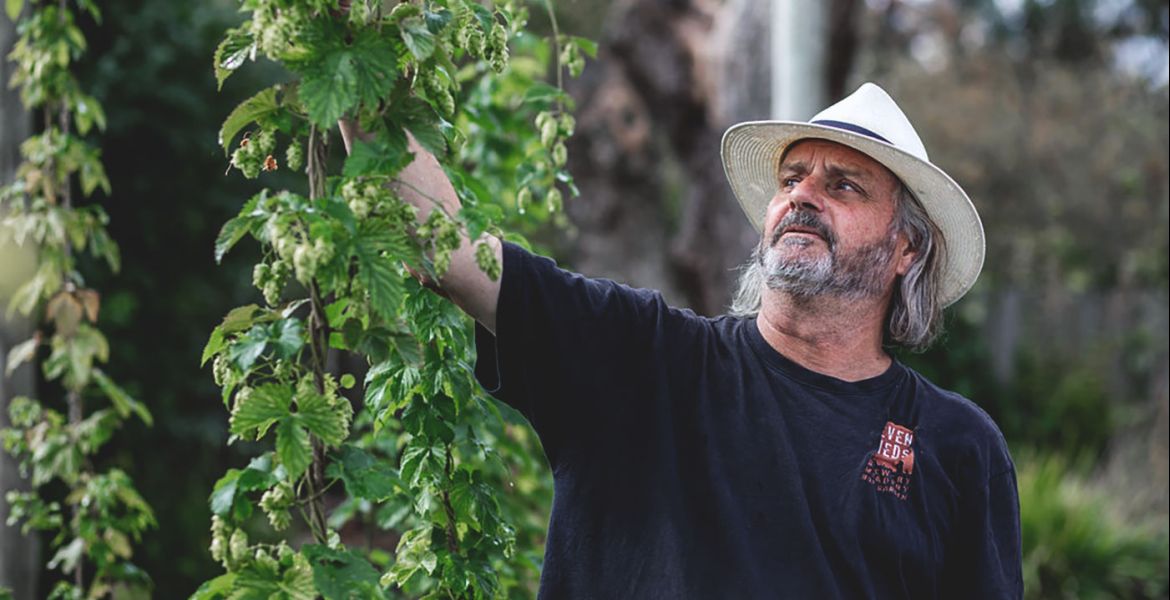This article launched our Year In Beer series for 2020. You can find state- and territory-based features looking at best new beers, standout moments, breakthrough breweries, and what to look out for in the year to come here.
2020. What a trip, eh? And not exactly a good one, even if good shone through in so many ways.
Remember the halcyon days of late 2019? Oh, hang on. That was pretty awful too, wasn’t it? Most people were hanging on for the end of the decade (other than those claiming the end of the decade was still a year away*) and hoping the new one would bring better times.
Bushfires had started wreaking havoc across the country before they chose the turn of the year as the moment they’d step things up from horrorshow to hellscape. On the one hand, this led to a coming together of fundraising efforts under the Beer For Bushfire Relief banner, which in turn led to the Resilience Beer. On the other, the fires distracted all but the most attentive from what was unfolding in Wuhan, a pandemic Australia has thus far escaped relatively unscathed, albeit at huge cost to the industries in which we operate.
Yet, through the catastrophes, the lockdowns, the border closures, the cancellations and the loss of life, the world has found a way to keep going. And so has the beer world.
After a temporary slowdown in the maddening rate of new releases as the realities of March set in, a switch to more packaged produce merely meant more of everything all the time as brewers and beer lovers became the living embodiment of the Arcade Fire track.
While breweries and venues have been lost, and the true cost of 2020 won’t be known for some time as subsidies end and bills come due, more have opened and many have thrived. New styles have exploded into ubiquitous status, behaviours have evolved, and people have pivoted so hard they were pretty much pirouetting.
At the end of a very different year, we’ve decided to take a different approach to our end of year coverage. Usually, we base it around a Best New Beers review of each state and territory; this time around, just as we skipped the Best New Beers – So Far feature that usually appears each July, we felt 2020 warranted something a little more suited to the situation. We’re still going to go around the houses, but taking in moments, highlights, breakthroughs and crystal ball-gazing as well as best beers.
Before they start, however, a look back at ten of the standout overarching trends. Some are unexpected, others may not last, while a few – like the arrival of We Will Always Love You’s all-encompassing cosmic hug at the time we needed it most – are undoubted positives that deserve to stick around for eternity.
However the year has been for you, we hope you’re ending it on a high – or at least with time over the holidays to rest, reflect, recuperate and recharge the batteries for what will hopefully be a glorious reemergence. See you on the other side.
Loving Your Local
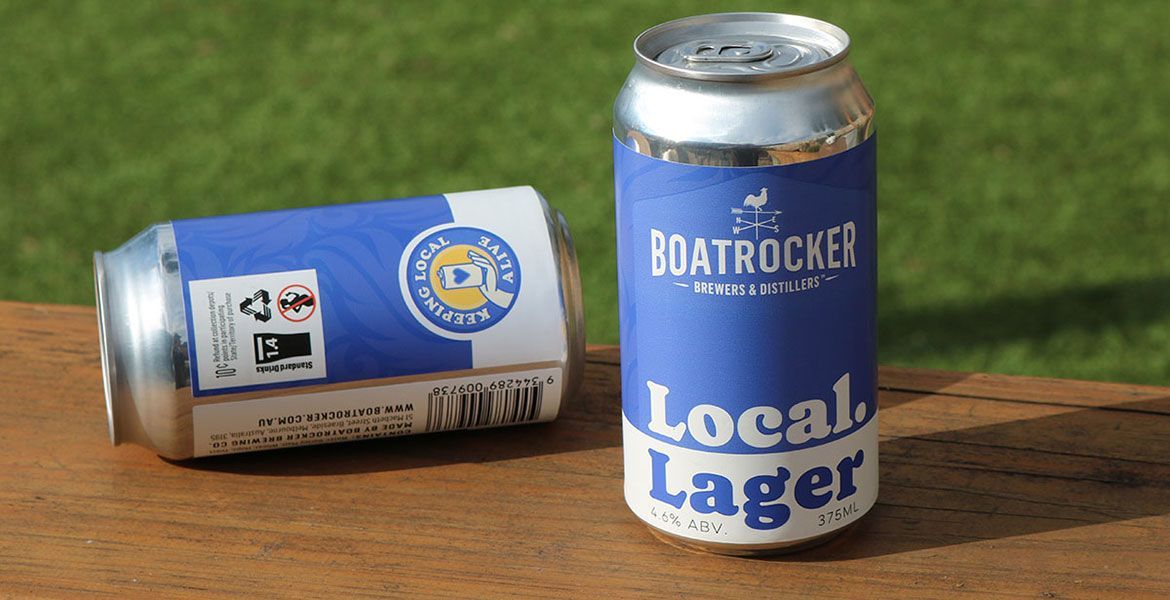
Local. It’s a word that’s long possessed significance in the world of booze and good times. Who doesn’t love having a good local? There’s no hard and fast rules for what makes one, but you know when you’ve found one, whether it’s an old corner hotel, a bar with a golden welcome, the neighbourhood brewery that’s as much community hub as watering hole.
But, in 2020, local became so much more: a rallying cry; something to hold onto, or to climb on board; a reminder of the importance of community; a chance to discover the humanity in previously transactional relationships; the beauty to be found within five kilometres of your home when you were forced to look for it.
While the #askforindiebeer message spearheaded by the Independent Brewers Association (IBA) continues to gain traction, one could argue “local” burst from the peloton to challenge “indie” as the cri de coeur du jour, just as indie has been doing to “craft” in recent years.
As craft beer has made its way into more parts of the country – the ‘burbs and beyond, regional towns – it’s been ever easier to talk about supporting local for the simple reason there’s more local beer in more places to support. But the nationwide shutdown of March 23, preceded by the growing terror as to what the future held as restrictions tightened, made the need to support local – not just beer, but all local businesses and organisations – more crucial than ever.
The Keeping Local Alive campaign struck a chord, giving impacted businesses something to cling to, as well as a clear message for their fans to get behind. We heard anecdotes from local brewers about drinkers who started buying their beers for the first time during COVID-19 because they wanted to get behind neighbourhood producers, even though they weren’t previously craft beer drinkers.
It went beyond the #keepinglocalalive message that appeared on posters, cans, and all over social media too (30,800 Instagram posts and counting). Locals switched from being the places to which people flocked to become the bringers of drinks, food, and good times to front doors. The WA Brewers Association launched their #drinkwestdrinkbest campaign at the same time they unveiled a new logo.
The big end of town got involved too. Dan Murphy’s fast-tracked many smaller breweries into their stores, BWS enjoyed huge success with Local Luvva as independent breweries campaigned hard to get their fans to vote them into the retailer’s range, while Coles have closed out the end of the year with a greater focus on craft and local than ever before, a move that’s likely to become more prominent in 2021.
The same was true of multinational brewing companies and their brands too. Lion continued their policy of creating brewpub-based brands, CUB launched Love Your Local, 4 Pines now have more than fifteen brewpubs and venues, many created as joint ventures, Mountain Goat opened a brewpub in Newtown, Pirate Life have a second home in Adelaide and one opening soon in Perth.
And many indies are at it too. The likes of Stomping Ground, Ballistic and Moon Dog are looking to become local brewers for drinkers in many parts of their home cities.
Whether inside beer or outside, the fact COVID forced us to live locally, thus forcing us to look locally and, in many cases, love locally is a silver lining we hope is here to stay.
Alcohol Free Beer
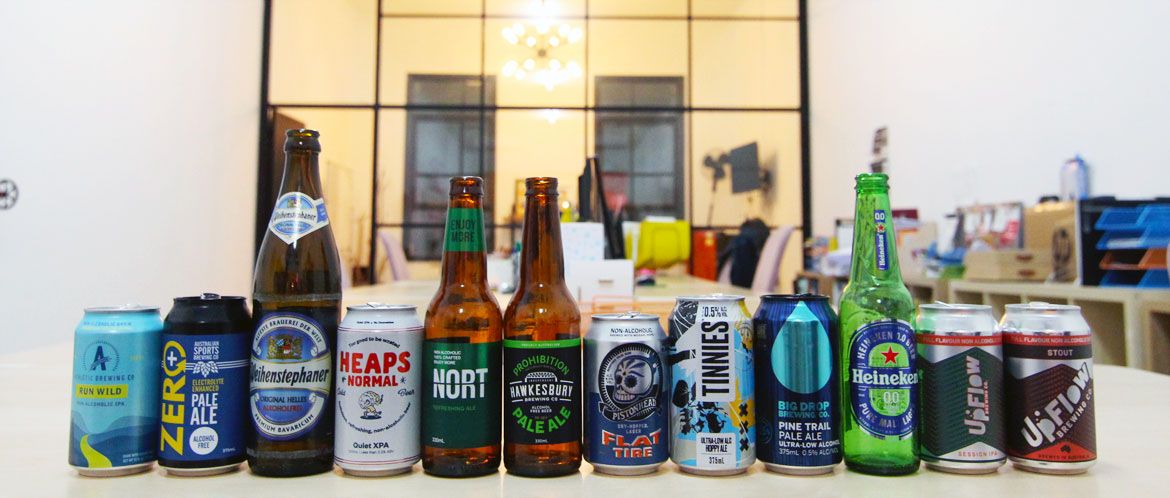
When it comes to noise, there’s half a dozen or more “styles” you could name that got the pointy-enders hot under the collar (some of which you’ll find below). But the rise of alcohol-free beer over the past year, while not unforeseen, has been significant.
Sure, it’s coming from a tiny base, but can you imagine if we’d said we wanted to do a blind tasting of 25 non-alcoholic beers a year ago? Or that, when we did, keyboard warriors would leap into action to complain we’d not made it 30 at the expense of some of their favourite imports?
That so many local options are now on the table is just as remarkable, both those produced by existing brewing companies – Nort from Modus Operandi, Love All from Holgate, Free by Mornington Peninsula Brewery, for example – or those specialising in it: the longer-established Sobah plus newcomers like Heaps Normal and UpFlow (whose Stout and IPA topped our tasting).
The award-winning Big Drop from the UK launched here in 2020, while BrewDog have high hopes for their range here, as everywhere. The Scottish brewery's head of operations in Australia, Calvin McDonald, told The Crafty Pint earlier in the year that, given the growing trend in the UK and the messages he receives locally, he expects it to be a big category here.
“I get annoyed emails and Facebook messages every single day asking why it’s not on the online shop anymore,” he said.
“I don’t want to overstate it, but when we’re set up to brew alcohol free here, I wouldn’t be surprised if Punk AF is right behind Punk [IPA] in terms of the volume we’re doing.”
Oat Cream IPA
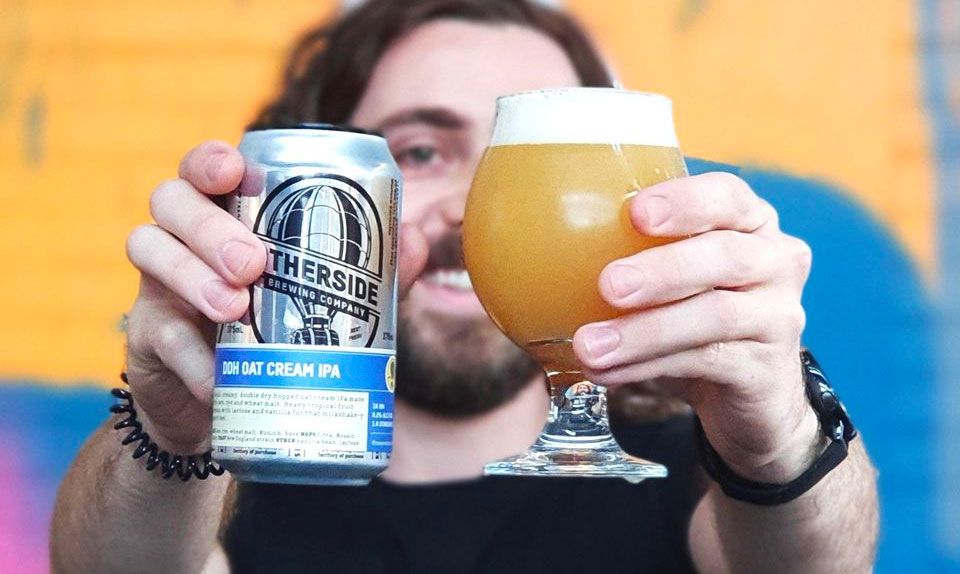
If we’re honest, this section could just as easily have been titled lactose. It’s less than two years since we ran an article on the history of milk sugar as an ingredient in beer, how and why it’s used, and the places it was starting to appear in contemporary craft beers. Now it’s cropping up in so many places, beer consumption is becoming a hazardous hobby for the lactose intolerant.
Yet, for all the cream sours and pastry stouts out there, it’s oat cream IPAs – the beer style formerly known as Milkshake IPA – that have the greatest claim to be the Lactose Legend of 2020 (not a real honour, but there’s always time).
Some breweries have released more oat cream IPAs in the past twelve months than others have released different beers in their entire lifetimes, and vastly more have, at the very least, relented and added a scoop or two to the fermenter.
Those that go heavier on the lactose really can be like ice cream in a can, almost demanding you pour a roasty stout over the top to create a meta spider. Personally, quite how anyone can make it through an entire can of such things is beyond me (and I thought I had a sweet tooth), but as the old saying goes: “There’s nowt as queer as folk.”
For those that prefer to go without the side serving of diabetes with their IPA, there have been some real beauties to get stuck into. When handled rather more delicately, a lick of lactose in a big, hoppy, hazy IPA – often in conjunction with oats or other body-enhancing grains – can add texture, soften abrasive edges, and blast the overt fruitiness of the hops into an even juicier, sweeter stratosphere.
Such has been their ubiquity, the japesters at Deeds put out Hold The Cream – an oat no-cream DIPA – to bring down the curtain on a big year for the Glen Iris brewery. And to think people once questioned whether hazy IPAs had longevity. Speaking of which...
Hazy Pales
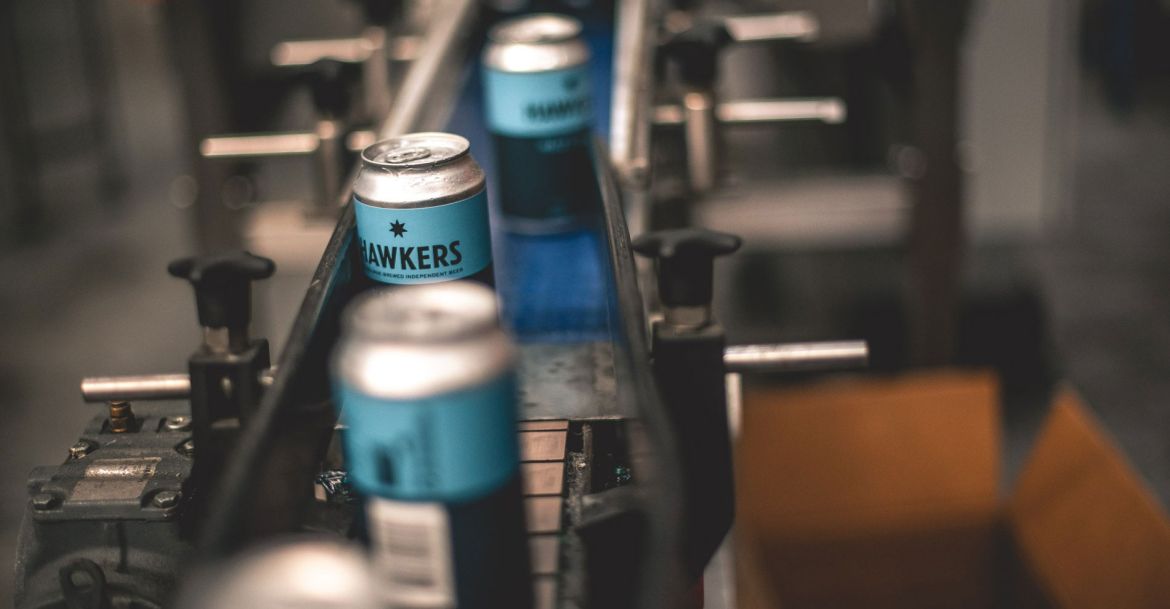
We’re all still crazy for the hazy, whenever and however we can get it. Or so it seems. And while TDH TIPAs, fruity NEIPAs and all manner of abbreviation-laden cans continue to fill fridges the land over, the most notable growth within the wider world of haze right now is at the smaller end.
There’s been the occasional wantonly hazy pale (as opposed to pale ales that happened to be quite hazy) land in our mouths for a few years now – Sauce were even minded to release one called Pazy Hale in late 2018 – but it’s noticeable how many of the more ambitious independents – those looking to build a business rather than chase hype – are focusing in this space as 2020 comes to a close.
There’s still time to see where the style-within-a-style will land as some are so pale as to appear like cloudy witbiers and often have a softness in keeping with their appearance, while others aren’t overly hazy and come at you in a sweeter, punchier fashion. I suspect it will be much more the former than the latter.
Just as we’re only really seeing the world of Aussie-brewed NEIPAs and hazy IPAs hit their straps in terms of consistency, quality and balance, it feels like this part of the market is still experiencing teething problems; alongside some crackers, we’ve found a fair few to be watery / thin, grassy, or out of whack: fluffy upfront with an unwanted bite at the end.
One of our Sydney-based writers, Judd Owen, suggests they’re essentially XPAs with added oats and/or wheat, with the desired end goal more or less the same: moderately ABV’d fridge-fillers that will move in packs rather than singles, servicing BBQs and picnics, rather than being shared and pored over, Untappd at hand.
Or as WA writer Guy Southern puts it: “From a consumer point of view, this is a familiar ‘safe space’ to retreat to having tried a bunch of bigger hazy beers; it’s a similar experience, but halved, and likely in a fun can too, while equally welcoming for new, craftier drinkers.”
While the balance in sales of core vs limited releases is shifting, overall it remains very much in favour of the former when it comes to volume. And, while there are exceptions out there, Australia isn’t like the US where IPAs dominate; we’re essentially a nation of session beer drinkers, as evidenced by the appearance of more and more hazy mid-strengths as 2020 ends.
Hype Hops
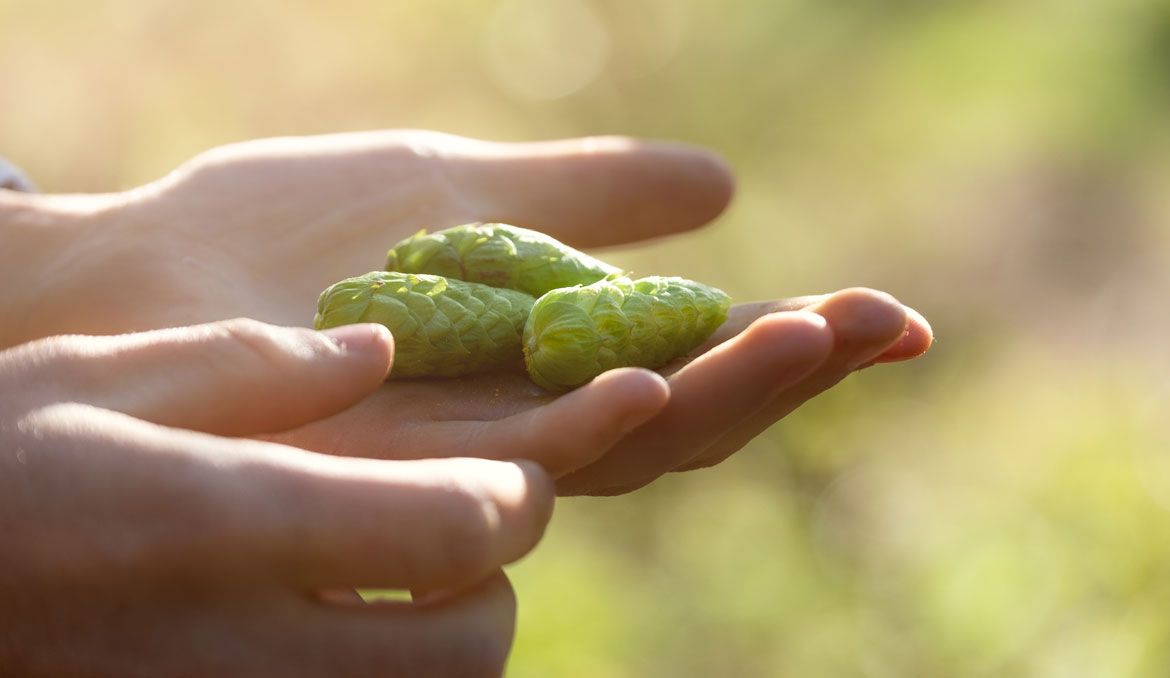
Has there ever been as much focus on new hop varieties as now? Sure, in crafty circles, many have known their Saaz from their Ella for some time, but each year brings more and more new varieties to these shores from all of the traditional growing regions of the world, and occasionally elsewhere.
What they promise to do in beer gets ever more intriguing too, from varieties like Talus that offer to complete a sweep of the fruit and baking sections of the supermarket and dump the whole lot in your beer, to those that aim to make you think the beer in your hand has been barrel-aged.
While there are classics that remain staples within certain styles, or at least come and go in waves, and others that haven’t been around that long but already feel like part of the furniture (looking at you, Mosaic), the new arrivals appear with such regularity it can be hard to keep track. Sabro, Strata, Samba, Zappa… If you didn’t know better, you’d think it was a commentator describing another exquisite team goal by the 1970 Brazilians.
Aside from the occasional outlier, the general trend is towards tropical and fruit forward, and away from piney, earthy, spicy. Sure, you’ve got the likes of the astutely-named Zappa that opens in tropical climes before spinning out on you, or Sabro coating its lime-forward fruitiness with creamy coconut, but for the most part it’s a fruit bowl frenzy, often with a lean towards the candy counter too.
The biggest story hop wise in Australia in 2020 was the launch of Eclipse. Sure, the hop had been around as HPA-016 for years, but breeder and grower Hop Products Australia are convinced this is a variety that, despite the name, has a bright future, and put together a broad launch campaign around its naming, for which they enlisted dozens of brewers.
An actual dozen of them made beers that went into a mixed pack of Eclipse-hopped beers covering many styles, rather than a collection of single hop pales or IPAs. It was, according to Judd, “an inspired idea and a fantastic way to introduce a new hop.”
He adds: “It was so good not to have to wait six months and go out of your way to seek out a non-IPA beer with a new hop. Having Eclipse in a dark lager, a wit and an India saison straight off the bat, available to all Australia wide, was a joy and made for some of the best beers of the lot, in my opinion.”
As ever, it will be interesting to see which varieties stick around – HPA have culled a few along the way as they’ve developed the likes of Galaxy, Enigma and Eclipse – but we can be certain the tide won’t ease.
Watch our chat about hops (and more) with HPA and Akasha here. And check out our feature in which we asked figures throughout the beer world to tell us about their favourite hops.
Session “Sours”
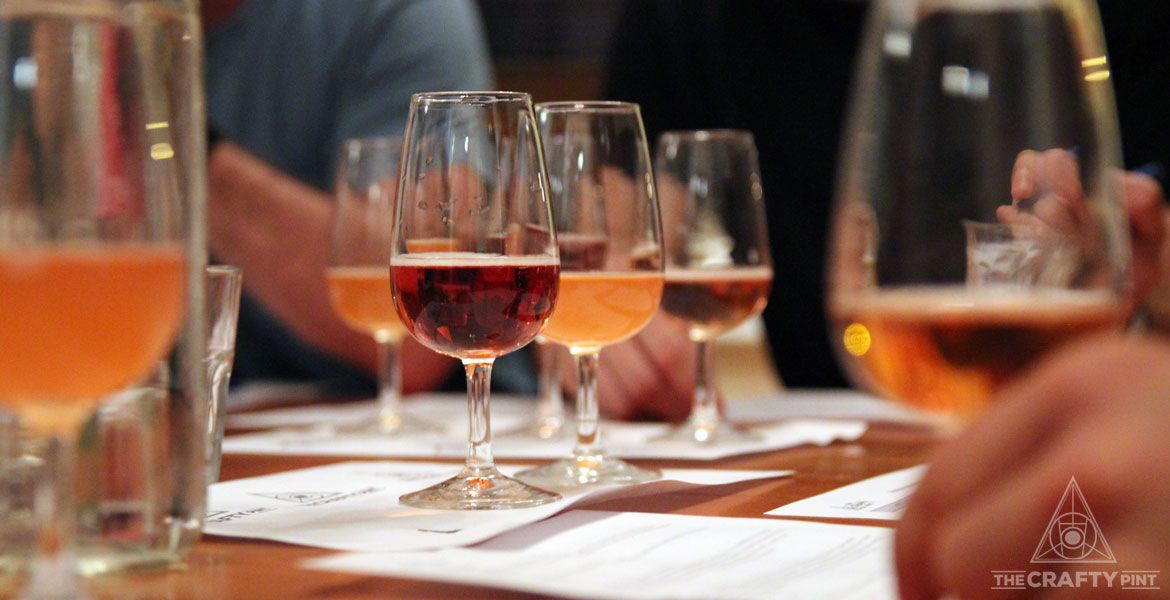
Session-friendly, fruited (and occasionally hoppy) sours are barely a new arrival in 2020; it’s nigh on three years since we put a stack of local offerings to the test in a blind tasting (pictured above). But the breadth of beers falling under the sour banner has never been wider, and the ability of those in which sourness is barely detectable beyond the label to expand the audience for craft beer has never been more apparent.
We’ve written about kettle and cuddle sours before. The former is the quicker, easier way to create a beer with acidity and a little funk; the latter a term we picked up from BentSpoke’s Richard Watkins for those that take shape with mixed cultures in oak over time and typically deliver more complex and often more confronting outcomes.
The arrival of products such as Lallemand’s WildBrew Philly Sour yeast and Sour Pitch dried bacteria have only made creating Berliner Weisse and gose style beers more accessible for brewers. Thus, as the public has become more open to them, it’s become rare to find a brewer without one in their arsenal, or indeed a craft beer pub or bar without at least one on tap year round.
What’s arguably most notable of the trends in this space in 2020 is that, while there have been some cracking imperial sours, an emerging pastry sour party, finessed barrel-aged blends, and searingly intense spontaneously-fermented wild ales, there have also been many that are closer to fruit cordial than beer, and certainly come bearing little you’d call sour or funky.
Such beers can fit the bill if you’re after a low ABV refresher, or if you’re someone who’s not into bitterness or malt driven beers, but you wonder what the lambic and gueuze producers of Belgium make of their appropriation of the word sour – or if can-conditioned contemporary cuddle sour drinkers would drink from a bottle, complete with cork and cage, any more.
Unlimited Limiteds
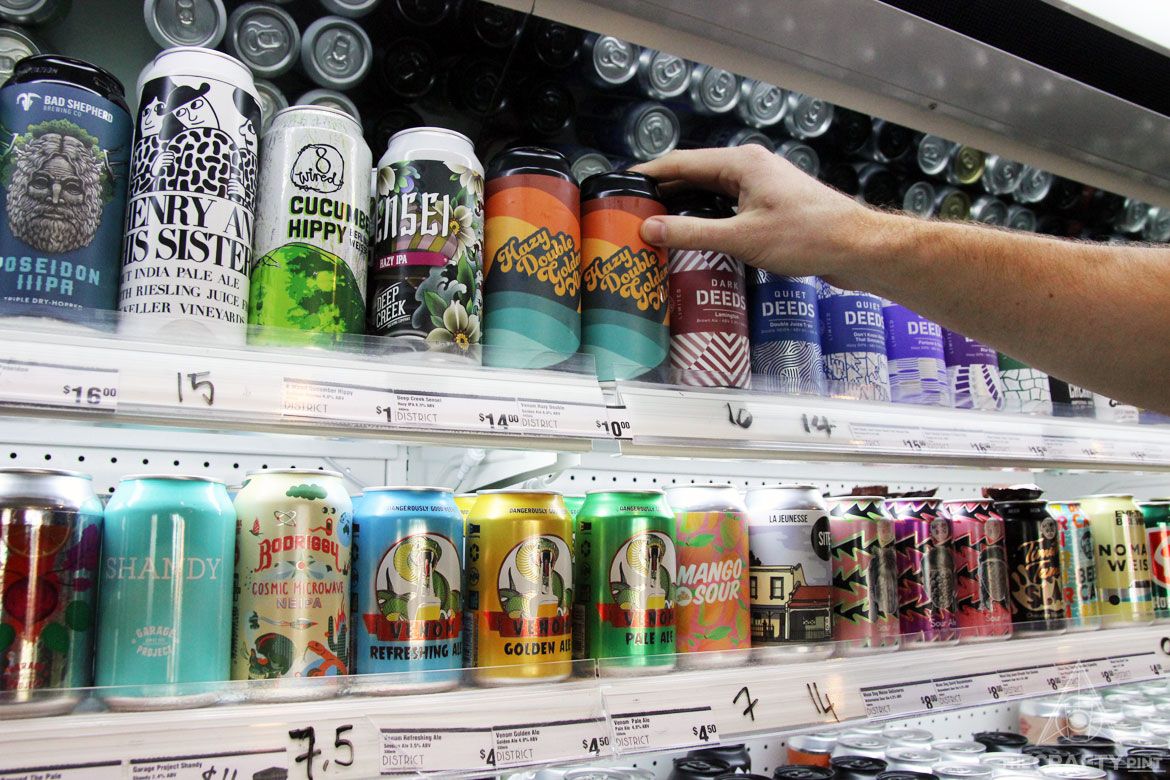
“The nexus of social media, FOMO, and stupidly small batches is both interesting and frustrating, for retailers and punters, and it’s not slowing down.”
Other than that brief period around the national shutdown, the new release conveyor belt has only turned faster in 2020, as Guy points out above. His opinion is informed not only by writing about and consuming beer, but also leading beer judging for WA Good Food Guide awards and spending the past few months working at Copper & Oak, a Perth bottleshop with a vast range of beers.
While the one-and-done specialty sector of the wider beer market remains tiny in the grand scheme of things, it’s the most volatile too, driven by hype and a desire to collect / chest beat as much as, if not more than, a deep interest in beer beyond the here and now. In many ways, it’s beer consumption as a game, a chase, a treasure hunt, one in which you can’t hope to win all the time, whatever winning might be.
As Guy says: “A speciality beer retailer may receive as little as one or two cubes of hype releases, so that’s 32 customers, with a one per person limit, which falls well short of demand – from both sides.”
Is it sustainable – for brewers, retailers, or consumers? Will it recede now venues are open again and demand for more regular beers on tap returns? Is it here to stay or only in its infancy? Will people eventually tire of hype and return over time to the comfort of consistent core ranges? Or will it continue to undermine loyalty, be that to beers, breweries, or even once-favoured styles?
Who knows, but it’s certainly exciting and exhausting in equal measure.
Direct-to-consumer
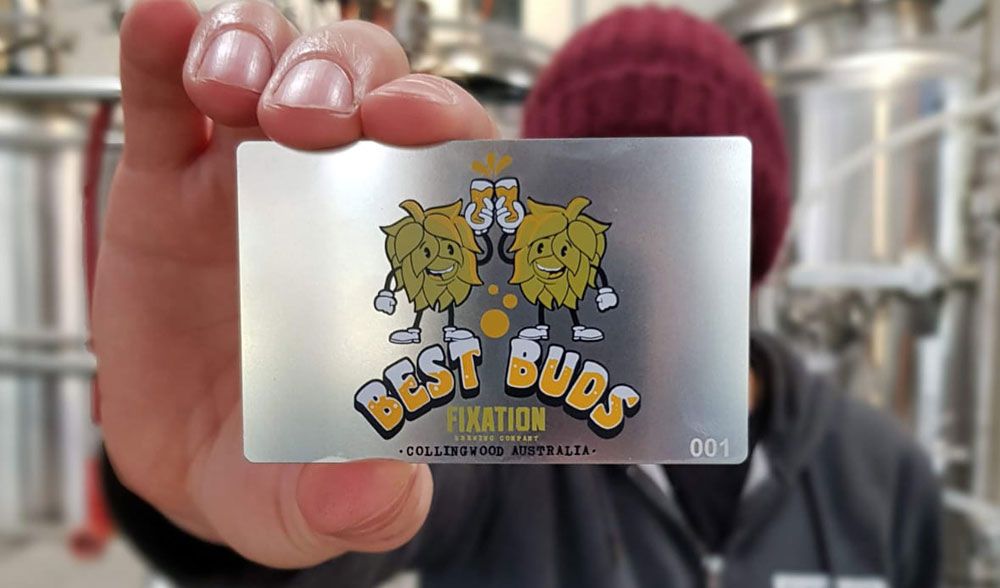
Some breweries had online stores before COVID, while others had them on their to do lists. Others had already set up subscription services or membership schemes – Bridge Road’s Posse is already more than a decade old, for example.
Yet, among the many changes forced by the pandemic, the en masse creation of online shops enabling breweries to reach their fans as many of their existing channels fell apart is among those with the most ongoing impact. Whether offering fans on their mailing lists early access to new releases, or the chance to buy mixed packs not available elsewhere, they aided survival for many small businesses and are now a significant income stream for some.
As for subscription services or beer clubs, they’re becoming more commonplace too. For brewers of esoteric beers, membership can offer access to rare, sometimes unreleased, blends, with spots limited and annual fees running to many hundreds of bucks. In other cases, the offerings might not be as wild or rare, but still open the door to specialties and privileges out of reach to the normal consumer.
For Ballarat’s Dollar Bill, their Rare Oak Society was created to help raise funds for their hoped-for taproom and garden of beer. Van Dieman’s Paddock – launched this week – promises events just for members at the farm, which isn’t currently open to the public. The first round of Fixation’s Best Buds (pictured above) sold out in a couple of days.
Not everyone has followed this route – KAIJU! made a point of not moving to direct-to-consumer sales early on in the pandemic, for example – and there have been grumbles from traditional retailers, not least when they see producers (not just brewers) selling their wares direct at prices equivalent to, or lower than, those they’re offering wholesale.
Chances are, we’re yet to see how this will play out. In more ways than one.
It’s also worth mentioning here that, in a sort of mirror of this, venues forced to close their doors (some more than once) but determined to remain open in some form found ways to diversify or expand their offerings too. There were the drive-thrus, the home deliveries, the growlers (and plastic containers and milk bottles), but also the spawning of merch ranges that allowed regulars to put money in the coffers when they couldn’t hand it over the bar.
Online
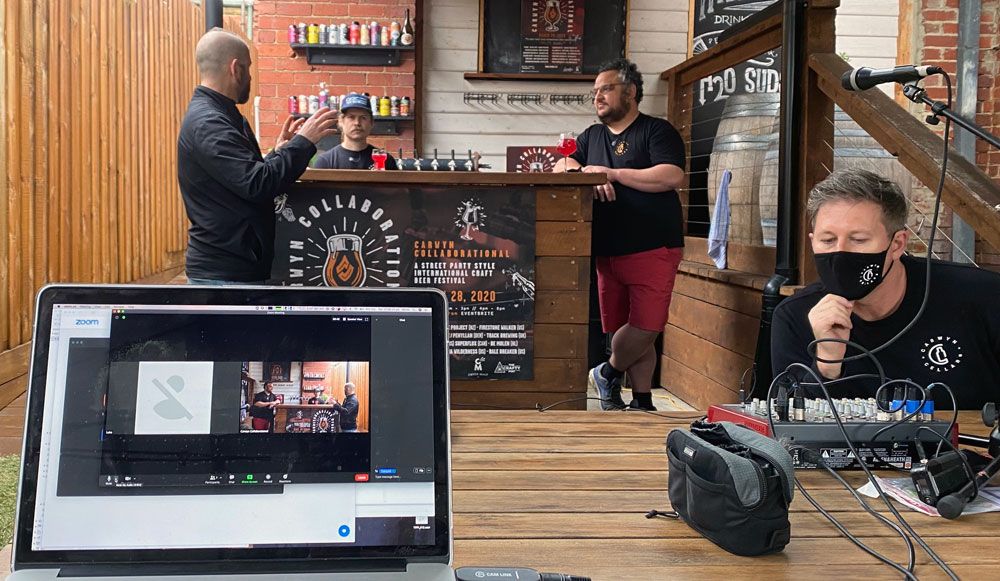
As with the prior entry, online events predate the pandemic, yet have entered new territory in 2020. As the walls closed in back in March, we quickly created the Beer Together YouTube channel with the Ale of a Time team as a means of putting beer content online for a beer community that could no longer gather in the flesh.
It was just one example among many, as brewers and retailers took to YouTube, Facebook and Instagram in order to converse in any way they could with their fans.
As our Brisbane-to-Sydney writer Mick Wust says: “We’ve seen both ends of the spectrum: a focus on hyperlocal, as drinkers connect with and support those breweries closest to them… and also instances of breweries from all over the country making their way into people’s living rooms and bedrooms. Sometimes long distance relationships do work out.”
A fair few brewery streams and live tastings born in the early weeks of the nationwide lockdown – as with some of the shows on Beer Together – live on, while there have been examples of remarkable ambition matched with excellent outcomes.
Arguably, the two outstanding moments were the Carwyn Collaborational and The Indies. (Full disclosure: I hosted both, but can claim zero credit for the planning and wizardry that went into them behind the scenes.)
With their unique festival concept kaiboshed by COVID, the Carwyn Cellars team instead pushed ahead with eleven international collaborations between Aussies and brewers from all parts of the planet, popped them inside mixed packs, then lined up an online festival. It opened with David Hasselhoff in his garden advising: “Don’t get Hoff your face!” then mixed pre-recorded interviews with live chats, attracting between 500 and 600 live viewers constantly throughout, and one very colourful live chat on YouTube.
As for the Indies, the phrase “bigger than Ben Hur” feels appropriate. The IBA had seen their Indie Beer Showcase, Good Beer Week, and BrewCon fall foul of the virus, but they remained determined to go ahead with their annual awards. Border closures and COVIDSafe requirements posed huge logistical challenges for the judging itself, which took place in three separate hubs in advance of an event helmed by a team in a full production studio in Richmond, joined by parties from all over the country, plus around 40 Zoom calls with the night’s trophy nominees.
By all accounts, it was a resounding success, and I wonder whether elements of 2020’s virtual event will survive even when crowds are allowed to gather and borders are open.
Closer to home, the move online has broadened our scope at The Crafty Pint too, even though that might seem an absurd claim for an online publication.
Our beer club, The Crafty Cabal, had suffered somewhat in the past from the fact it operates in a country that’s bloody huge yet has a small and scattered population. When we ran events for members, you could only partake if you were in that part of the country at the right time. And, by the very nature of where breweries and beer venues exist, there are vast swathes of the country inhabited by beer lovers yet without breweries or venues where we can line up benefits for them.
Suddenly, in the new COVID normal, we were able to add deals and discounts not bound by geographical location, and run events online that members anywhere could join live, or catch up with later. It’s allowed us to expand the offering of the recently-relaunched Cabal in ways that either weren’t possible pre-2020, or ways we hadn’t thought of and didn’t have the skills and gear to attempt.
All being well, when in-venue events return in 2021, they’ll include a live-streamed element so members everywhere can join in from afar, and I know we’re far from alone in the beer world in looking to make such unexpected bonuses part of our future planning.
We've got a summer promo running where one brewery or venue will win a Crafty Cabal branded table tennis table from Pongo worth $2,750. Read about it here.
Massaging the message
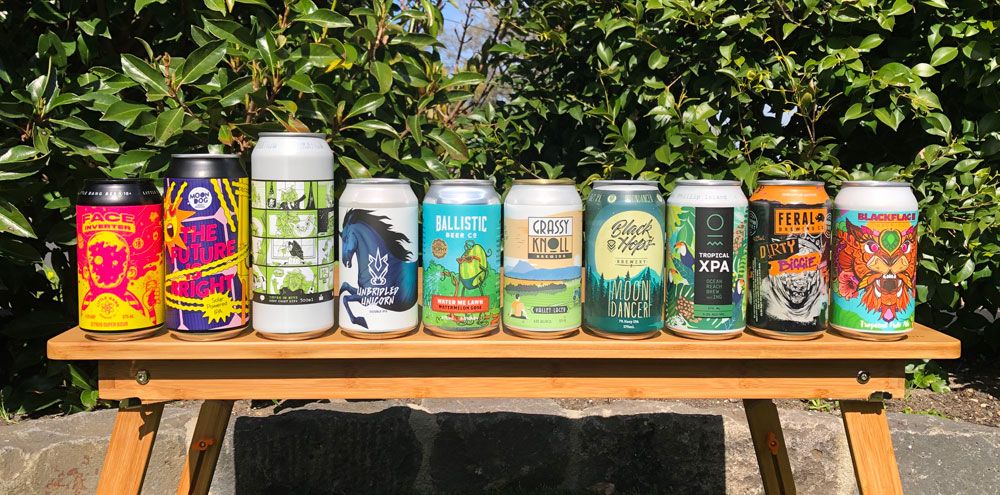
For the most part, the craft beer industry has become more professional over the decade-plus we’ve been covering it. Whether that’s in the way owners and staff run their businesses, operate their breweries, or present themselves to the outside world. We’re long past the point at which making good beer is enough to guarantee success, at least if you’re not operating with a captive audience, such as a regional or suburban brewpub.
Arguably the most notable recent change in this refining of an industry built upon sweat, passion, inspiration and humour has been the growing influence of graphic designers, brand and PR consultants, marketing and social media managers; a few high profile screw-ups on the latter front – not to mention the watchful eye of ABAC – make it easy to understand why some people benefit from advice or outsourcing.
If your beers don’t look good or stand out in a fridge, why is someone who’s never heard of you going to give you a try, unless you’ve got an advocate in every bar and bottleshop? How can you possibly understand, let alone build traction within, the ever-changing world of mutating algorithms that is social media if you’re fighting to get beer out the door on time? Is it possible to stay relevant without regularly reviewing your brand – as the likes of Ballistic, Akasha and Exit have done in 2020 – as well as what you pour through your pub’s taps or offer guests at your taproom?
We’re seeing some stunning branding and artwork in all corners of the industry these days, plus impressive social media accounts and impactful campaigns, such as coordinated beer launches where prominent bloggers and beerstagrammers are sent free beer and asked to post about them at the same time.
Of course, all of this is nothing without great beer or quality customer service at venues to back it up – you can’t polish a turd, after all. Businesses also need to know who they are and what they stand for before engaging outside assistance. Thankfully, with this sector of the industry having grown significantly in recent years, there’s a good chance you can find such assistance whatever the size of your operation.
There is, however, a danger that a focus on capturing people’s attention with eye-catching design or social media stunts takes away from a focus on education and deeper engagement with the growing horde of craft beer drinkers. And underlying it all, to paraphrase Aunty, the overseer of good times at Meredith and Golden Plains: don’t be a dick, as poor decisions can impact the entire industry.
More and more beer businesses are excelling across the board, and people in collaborative industries – illustrators, graphic designers, etc – are receiving well-deserved credit for their roles too, for example via the GABS Can Design Awards (pictured above) that debuted earlier this year.
It might all sound a million miles away from the fun-loving, rebellious, Wild West of a decade or so ago, but the fun remains, and there are now more ways for people to express their personalities. Think of the industry like the comeback hairstyle of the year, the mullet: business in the front, party at the back.
So, there’s our ten, a lineup that was much debated and still doesn’t allow room for discussion of the growler renaissance (will it outlive the ATO’s plan to end the current tax holiday?), the rise of pastry sours, the brewers who once bemoaned the term “pastry stouts” and faddish “DDH” and now happily plaster the words on their cans, the appearance of wood in more beer styles and introduced via techniques other than barrel-ageing (as Guy describes the use of oak cubes / stave chips / or staves themselves: “fast-tracked oak character”), or the rising number of venues moving away from contracts to support independents.
Actually, now I think about it, we do have to include one more.
Hard Seltzer
It is what it is.
* Is it too late to join those people in the hope this really is the end of the decade and the next one will bring brighter days?
Thanks to the wider Crafty team for their input to this article. It's been almost as intense as the year itself...



